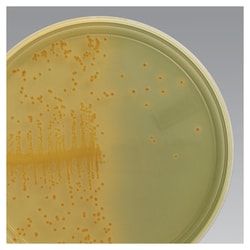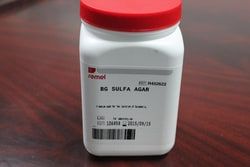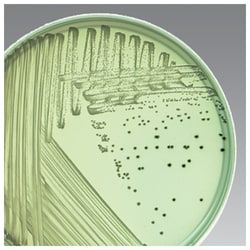R452402
Thermo Scientific™ Remel™ Bismuth Sulfite Agar
Manufacturer: Thermo Scientific™
The price for this product is unavailable. Please request a quote
Description
Bismuth Sulfite Agar
Form
Powder
Product Type
Agar
Quantity
500 g
Related Products
Description
- Isolate and differentiate Salmonella species from clinical specimens and other materials using Thermo Scientific™ Remel™ Bismuth Sulfite Agar (Dehydrated)
- In 1927, Wilson and Blair introduced Bismuth Sulfite Agar that selectively isolated typhoid and paratyphoid groups of bacteria from stool specimens 1
- This medium has been recommended by the United States Pharmacopeia (USP) for the use in microbial limit testing 2 , the Food and Drug Administration (FDA) and American Public Health Association (APHA) for isolation of Salmonella and other pathogens from foods and dairy products 3-6
- The medium contains beef extract and meat peptone which supply amino acids, peptides, carbohydrates, vitamins, and nitrogenous compounds required for the growth of microorganisms
- Dextrose provides a ready source of energy
- Ferrous sulphate is an indicator of hydrogen sulfide production
- Bismuth is a heavy metal that has inhibitory properties for certain microorganisms
- Salmonella species produce hydrogen sulfide which reacts with ferrous sulfate and forms a metallic precipitate (black or green coloration)
- Selective media - Brilliant green dye is a selective agent Easy-to-read: The characteristic black and green coloration of Salmonella species comes from a metallic precipitate that forms when hydrogen sulphide, produced by Salmonella species from sulphur compounds in the medium, reacts with ferrous sulfate
- Recommended by the United States Pharmacopeia (USP) for the use in microbial limit testing 2 , the Food and Drug Administration (FDA) and American Public Health Association (APHA) for isolation of Salmonella and other pathogens from foods and dairy products 3-6 .



